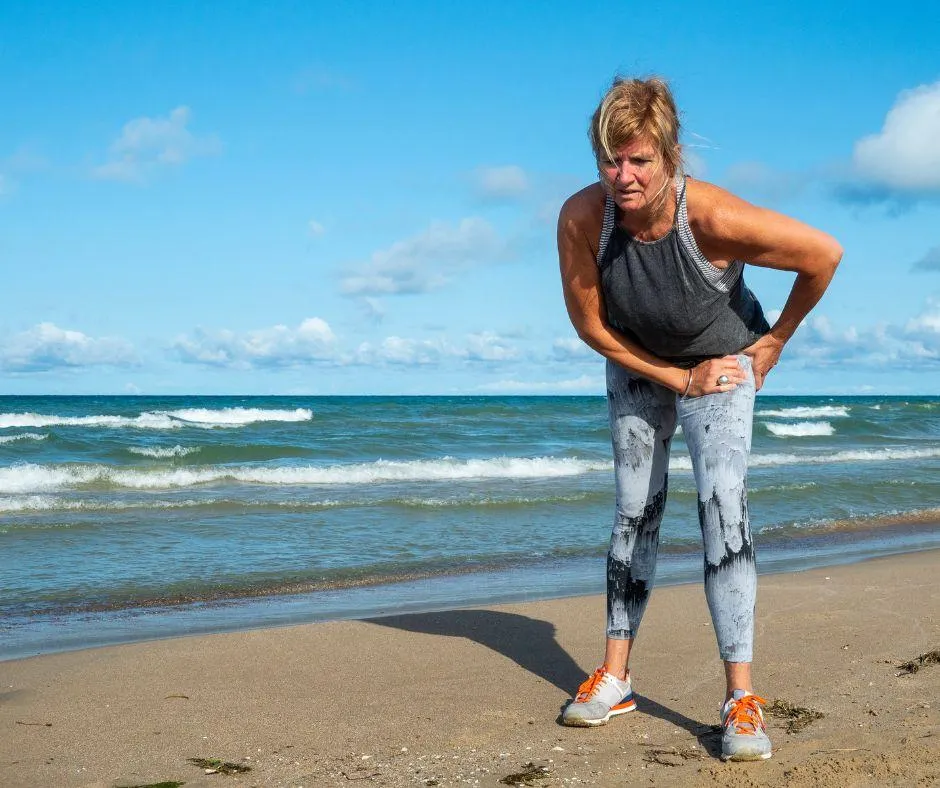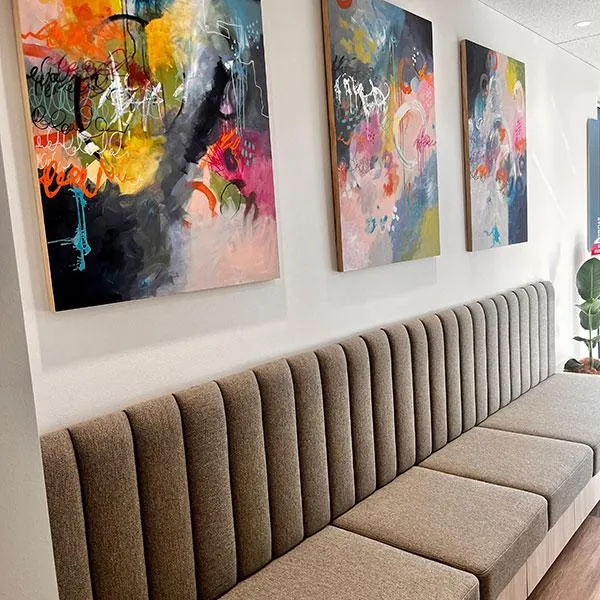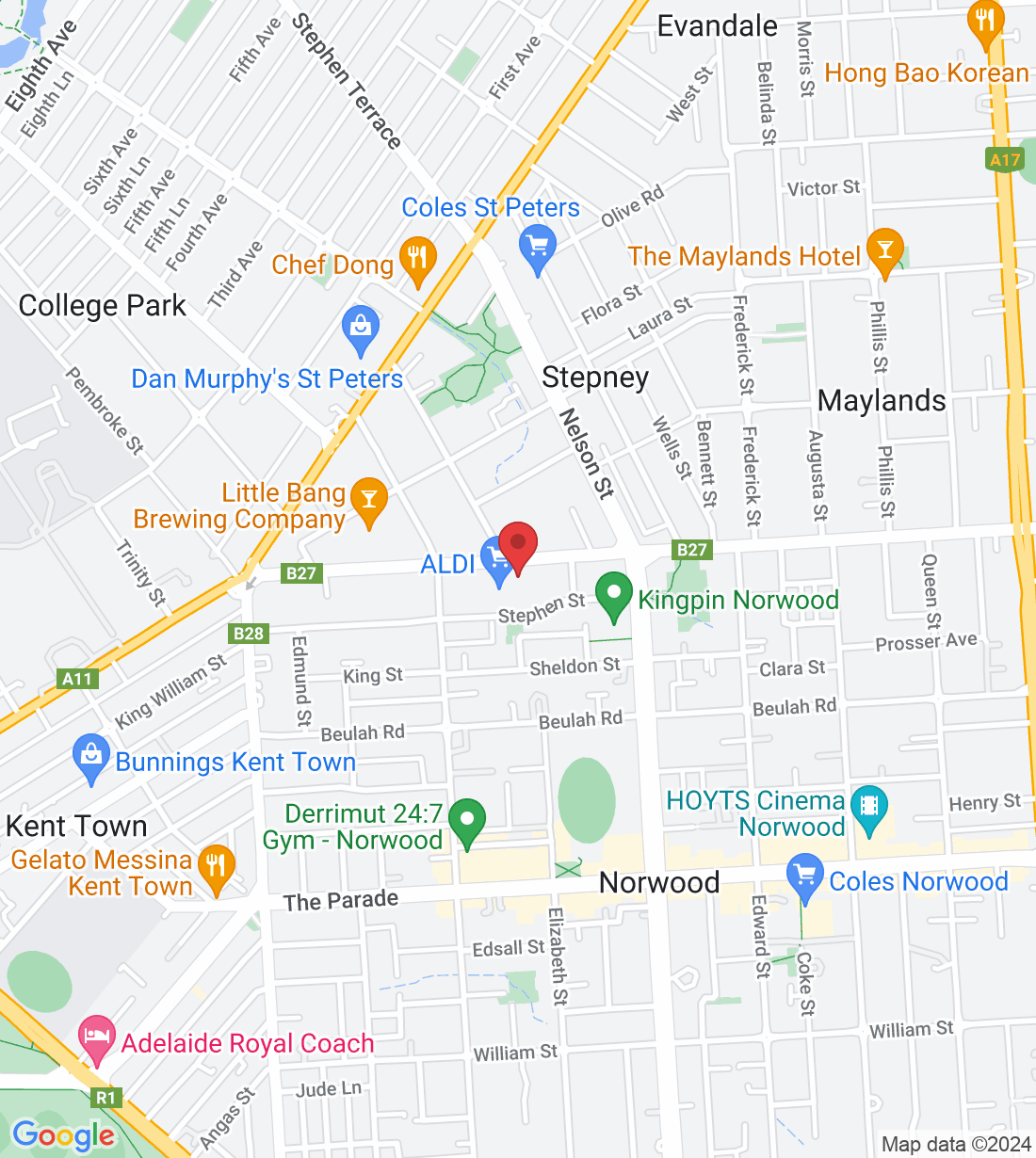
Hip pain in perimenopausal women - but why?
Studies have shown that about 1 in 4 women over the age of 50 suffer from pain on the outside of the hip and that this is particularly true for active women - hands up runners and walkers if this has been you at some stage. The current correct term for pain in this region is greater trochanteric pain syndrome (GTPS) and incorporates a number of local structure irritations.
Greater trochanteric pain syndrome - what is it?
The outer side of the hip includes a large number of structures ( below) that start at the top of the pelvis and run down to the outside side of your knee. The greater trochanter is your hip bone that 'sticks out' a bit at the side at the top of the leg.

GTPS is pain in and around the greater trochanter. There are a number of common pathologies associated with this such as Gluteal tendinopathy which is discussed later.
Middle aged females are at more risk of GTPS than men of the same age or younger women. This is due in part to the wider shape of the female pelvis (compared to men) but also because of the importance of the hormone oestrogen on bone, muscle and tendon health. By the age of 50 most women will have considerably limited amounts of circulating oestrogen. This will often result in a generalised decrease in strength through the legs and hips and less resilience in key tendons. The aforementioned wider pelvic bones means women are more likely to walk (and run) with their legs angled at the knees placing more stress around the hip area. The combination of these factors can result in pain around the hip area.
What are the symptoms of GTPS?
GTPS can present in a number of different ways because of the large number of structures that are in, around and adjacent to the area.
Common symptoms;
Pain at the side of your hip that may run down the outside of your thigh to your knee. Sometimes the pain will radiate into the groin also.
Feelings of tightness across the side of the hip and thigh
Pain walking or running up or down stairs/hills - or sometimes after doing those activities.
Pain sitting with legs crossed or for long periods of time
Pain lying on the affected side at night
Difficulties coping with your normal running or other physical activities even if the pain only occurs after and not during the activity.
Gluteal tendinopathy
One of the most common causes of GTPS pain in women is gluteal tendinopathy - an injury to the tendon of one of the most important controlling muscles of the hip. It typically occurs from increasing the intensity, frequency or duration (or all three) excessively in activities such as running, walking, hiking, or even stair walking on holidays! It also commonly occurs after an extended period of inactivity/ illness causing weakness.
Tendons are extremely tough tissue being stronger than muscle and in the case of the Achillies tendon, stronger than bone! Tendons connect muscle to bone. Their primary role is to transmit forces from muscle to bone which results in joint movement. The higher (stronger, faster, more often) those forces, the more the tendon has to work. Tendons act as shock absorbers, energy storage sites and joint positional controllers. They work hard every day regardless of our level of activity. You can read more about tendons here
With gradual and consistent loading a tendon can become strong and resilient despite a woman having low oestrogen levels. However if over loaded (such as from activities above) it can become stressed, sore and possibly sustain small areas of trauma.
What about Bursitis?
One of the common symptoms of Gluteal Tendinopathy is bursitis. Bursitis simply means inflamed Bursa. A Bursa is structure that sits between two structures (in this case the hip bone and the Gluteal muscle/tendon) and acts like a bit of a cushion or support structure so that the tendon doesn't run directly over the bone and get damaged. Unfortunately quite often with a Gluteal tendinopathy the muscle becomes quite weak and doesn't hold it's position away from the bursa very well when being used - such as with walking or running. As a result the tendon compresses and irritates the bursa - causing the bursitis! Until you can improve the actual muscle/tendon strength and control it will continue to compress it and cause problems.
Bursitis has traditionally been managed with cortisone/steroid injections which do offer some temporary relief in symptoms. Unfortunately they are a band-aid that covers a bigger problem and may eventually cause more harm then good. Multiple cortisone has been shown to cause further degeneration of the tendon which can then contribute to chronicity (on-going nature) of the problem. It is only through the appropriate strengthening of the tendon (via exercise) that you can 'cure' Gluteal tendinopathy. However for some people the temporary reduction in pain from the injection may be useful to exercise and strengthen the tendon appropriately! For more information about tendinopathies please read our blog.

Do I need imaging?

Imaging (such as ultrasound or MRI) can be beneficial to reassure there is nothing actually broken but should be reserved for those at high risk (traumatic injury, serious illness, elderly). For most people it is in fact a waste of time and money for a GTPS as it often show's things that have no significant relevance to your symptoms. Imaging of the hip in a middle aged woman (or man) will likely show hat they are in fact middle aged - there are tears in the tendons, the bursa is thickened, there is lipping of the bones. These are all common and somewhat normal findings and are not correlated well with pain or dysfunction. Imaging findings like these can cause stress and worry and actually make the pain experience worse. Imaging findings like these are unlikely to change the course of recommended treatment either. So our recommendation is - avoid it.
Vital Core Physiotherapy can help with GTPS
We love hips! Particularly middle aged and/or sporting hips! We have had so many training sessions on this area of the body because we love it so much. Why? Because it is an area that is so often poorly managed and yet responds beautifully to the correct assessment and management - it's so rewarding for us to help our patients achieve their goals
Through thorough questioning and examination we will strive to determine what exactly is causing your problem and why and most importantly, what are your goals! What can't you do that you'd love to be able to do? Once we're clear on this, then together we can formulate an accurate and complete treatment plan to get you back to your best as soon as possible. We aren't about the quick fix. We are about the long term resolution of dysfunction and the promotion of healthy, active living. The research has proven that exercise and education are effective in treating GTPS regardless of the structure involved.
Vital Core physio's will spend the time to develop a treatment plan with you that will include a progressive exercise plan to get your hips and lower legs strong again regardless of age or stage and get you back doing the activities that you love.
Call 83310552 or book an appointment online.

Reference
French, H. P., Woodley, S. J., Fearon, A., O’Connor, L., & Grimaldi, A. (2020). Physiotherapy management of greater trochanteric pain syndrome (GTPS): an international survey of current physiotherapy practice. Physiotherapy, 109, 111–120. https://doi.org/10.1016/j.physio.2019.05.002
Ask a question of Vital Core Physiotherapy
Fill in the form to request a Call From Our Team
One of our team will call you for FREE and answer any questions or concerns you may have about your condition
© 2023 Vital Core Physiotherapy





